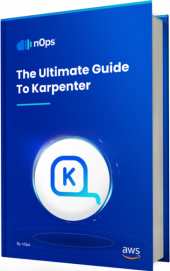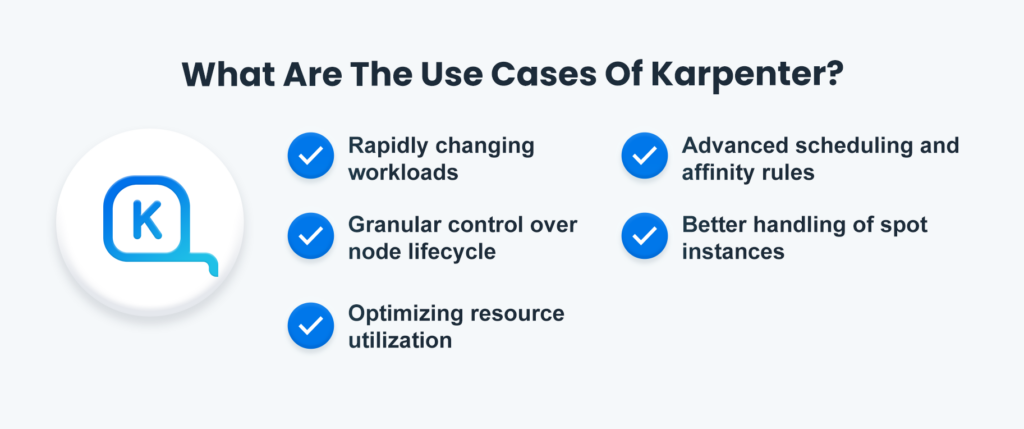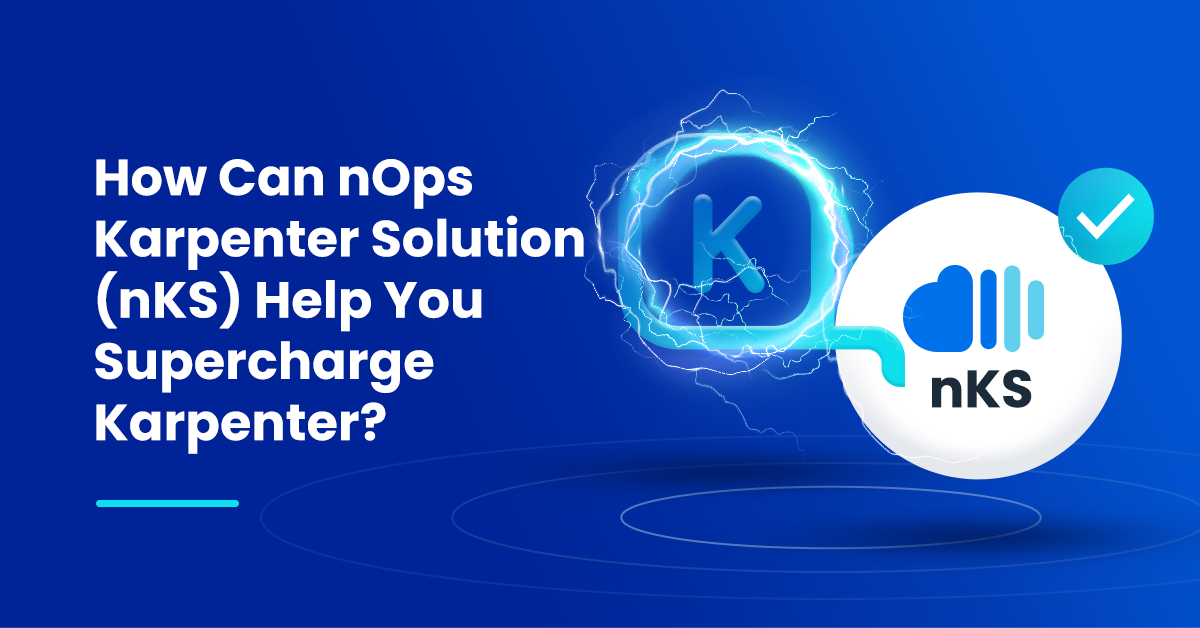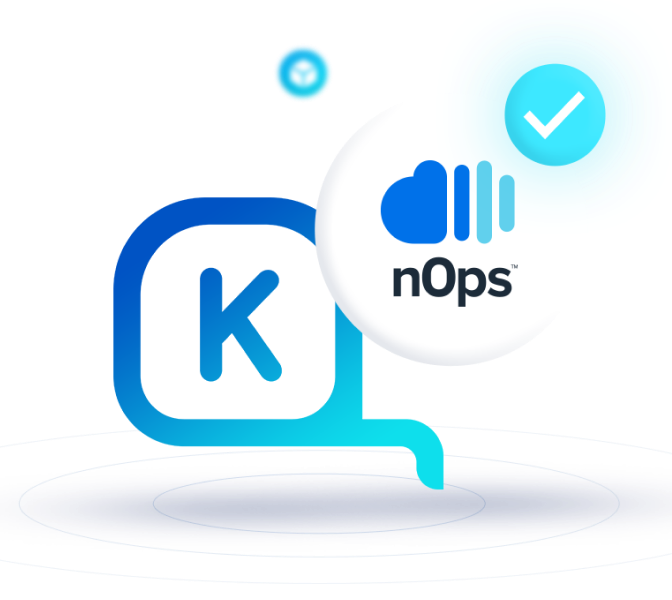Real-world Use Cases Of Karpenter
AWS Karpenter is revolutionizing node management within the Kubernetes ecosystem by introducing adaptive autoscaling capabilities as an open-source solution. It streamlines and automates the node management process, eliminating the need for node group abstractions by directly interacting with the AWS EC2 fleet API for efficient node provisioning.
With the amazing benefits that Karpenter offers, it has contributed to many real-life use cases. This blog covers Karpenter’s role in Kubernetes and the real-world use cases it offers.
What is the role of Karpenter in Kubernetes?
Karpenter plays a vital role in simplifying the resource scaling process within Kubernetes clusters by automating the management of diverse spot instances, node pools, and resources. Before the introduction of Karpenter, Kubernetes users faced the arduous task of manually adjusting cluster computing capacity, relying on Kubernetes Cluster AutoScaler or Amazon EC2 Auto Scaling Groups. This approach proved to be complex, time-consuming, and limited in functionality.
However, with the integration of Karpenter, a seamless combination of unscheduled pod resource requests and automated decision-making for launching new nodes or terminating existing ones becomes achievable. This automation effectively reduces infrastructure costs and scheduling latencies.
Thus, by utilizing Karpenter, Kubernetes users can streamline their resource scaling workflows, significantly improving operational efficiency and optimizing resource allocation within their clusters.
The Ultimate Guide to Karpenter

What Are The Real-World Use Cases Of Karpenter?
Karpenter offers a range of real-world use cases demonstrating its value and versatility in effectively managing Kubernetes clusters. Some prominent use cases of Karpenter include:
- Rapidly changing workloads: Karpenter takes a proactive approach to node provisioning, enabling it to swiftly adapt to fluctuating workload demands. If your Kubernetes cluster frequently experiences shifts in resource requirements or has workloads characterized by short-lived, high-intensity bursts, Karpenter ensures more efficient scaling to meet those dynamic demands promptly.
- Granular control over node lifecycle: Karpenter provides fine-grained control over node termination through its Time-To-Live (TTL) settings. This can be useful for scenarios where you need to manage node lifecycles based on factors such as cost considerations, usage patterns, or scheduled maintenance, allowing for fine-grained control over resource utilization.
- Optimizing resource utilization: Karpenter’s customizable scaling policies and support for diverse instance types can help optimize resource utilization in your cluster. If you need to manage various workloads with different resource requirements, Karpenter can help ensure that your cluster provisions nodes tailored to your workloads’ needs.
- Advanced scheduling and affinity rules: Karpenter supports advanced scheduling and affinity rules to help you better manage workload placement and resource allocation in your cluster. If you have specific requirements for workload distribution or need to enforce strict resource constraints, Karpenter provides the flexibility to handle these scenarios.
- Better handling of spot instances: Karpenter’s approach to spot instances offers better cost optimization and flexibility compared to the Cluster Autoscaler. Karpenter can automatically provision a mix of on-demand and spot instances, dynamically choosing the most cost-effective options that meet your workloads’ resource demands.
These capabilities collectively contribute to a more streamlined and efficient management of your Kubernetes clusters.
How Can nOps Karpenter Solution (nKS) Help You Supercharge Karpenter?
Karpenter has a lot of potential, but its capabilities are limited because it’s a new open-source project. Therefore, to fully harness its capabilities and overcome limitations, nOps Karpenter Solution (nKS) offers a powerful solution. By leveraging advanced machine learning and AI-driven techniques, nKS enhances efficiency, cost-effectiveness, and ease of use for managing Kubernetes clusters
- nKS considers the entire AWS ecosystem, including Reserved Instances (RIs) and Savings Plan commitments, to achieve significant cost savings, potentially up to 50%.
- It monitors workload changes across the AWS ecosystem and dynamically rebalances cluster nodes accordingly to prevent underutilization or overprovisioning.
- Instead of relying on a complicated command line interface, users can easily navigate nKS’s intuitive interface to configure and manage their Karpenter deployment.
- A 60-minute advance termination prediction where nKS constantly watches the spot market to predict a shift in demand and avoid any spot interruptions.
Upgrade to nOps Karpenter Solution (nKS) and automatically optimize your environment for spot, RI, and savings plans today. Reduce your EKS infrastructure costs by 50% or more with nKS.
Explore more about nOps Karpenter Solution (nKS)








